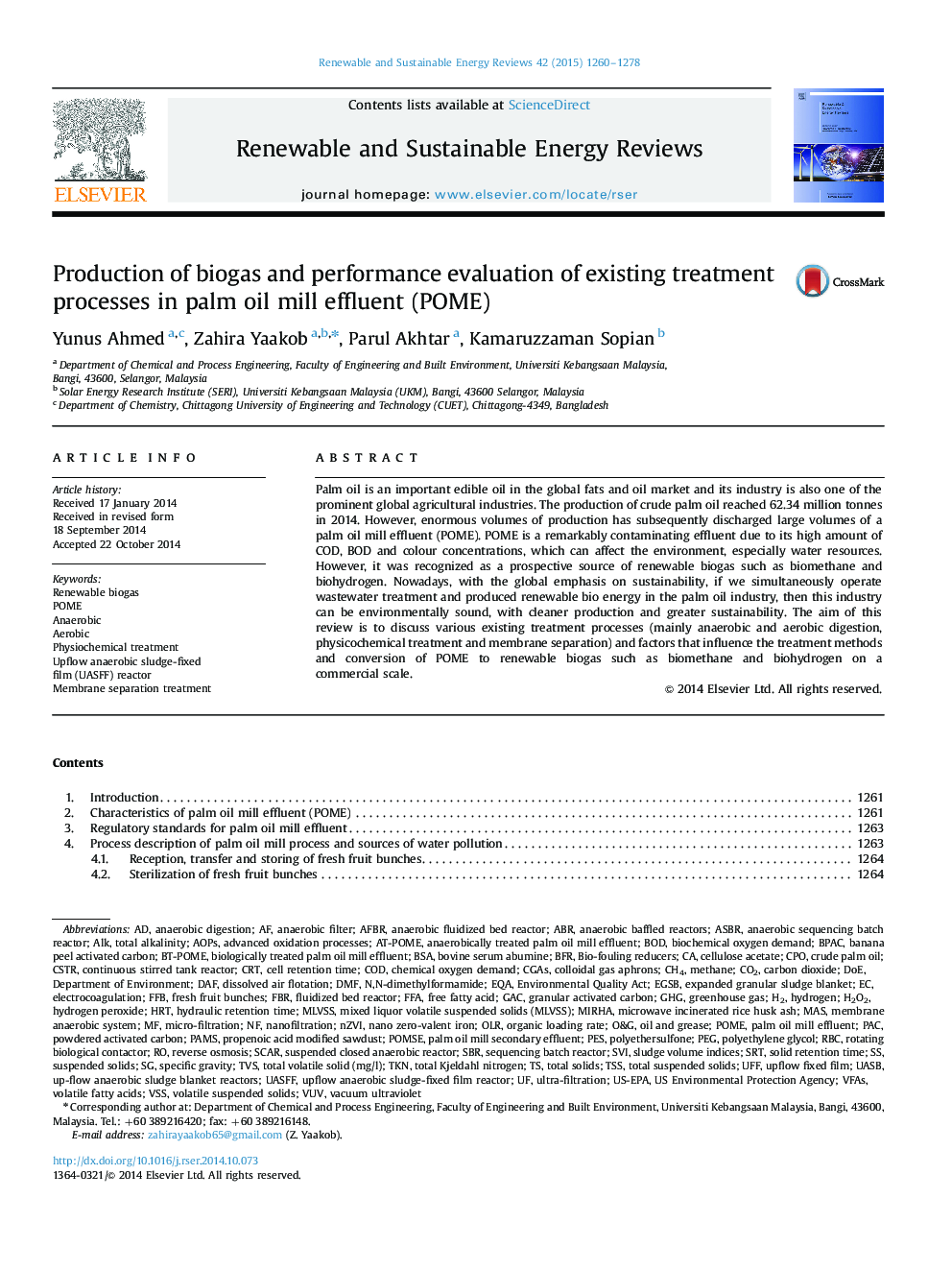| Article ID | Journal | Published Year | Pages | File Type |
|---|---|---|---|---|
| 8118227 | Renewable and Sustainable Energy Reviews | 2015 | 19 Pages |
Abstract
Palm oil is an important edible oil in the global fats and oil market and its industry is also one of the prominent global agricultural industries. The production of crude palm oil reached 62.34 million tonnes in 2014. However, enormous volumes of production has subsequently discharged large volumes of a palm oil mill effluent (POME). POME is a remarkably contaminating effluent due to its high amount of COD, BOD and colour concentrations, which can affect the environment, especially water resources. However, it was recognized as a prospective source of renewable biogas such as biomethane and biohydrogen. Nowadays, with the global emphasis on sustainability, if we simultaneously operate wastewater treatment and produced renewable bio energy in the palm oil industry, then this industry can be environmentally sound, with cleaner production and greater sustainability. The aim of this review is to discuss various existing treatment processes (mainly anaerobic and aerobic digestion, physicochemical treatment and membrane separation) and factors that influence the treatment methods and conversion of POME to renewable biogas such as biomethane and biohydrogen on a commercial scale.
Keywords
DMFDOETSSCH4GHGCgasBODCSTRHRTOLRASBRUASBEGSBAFBRGACPACFBRVFAsPESCPOCrtFFAMLVSSPAMSDAFRBCTKNABRDepartment of EnvironmentTVSBFRsRTSBREQAUS-EPAbPACVUVFFBO&GUFFUASFFSVIAOPsBSAN,N-dimethylformamideVSsHydrogen peroxideALKUS Environmental Protection AgencyCellulose acetateReverse OsmosisFree fatty acidVolatile fatty acidsElectrocoagulationAerobicAnaerobicMASbiochemical oxygen demandchemical oxygen demandTotal solidsSuspended solidsSCARnZVIRotating biological contactorCarbon dioxideFluidized bed reactoranaerobic sequencing batch reactorAnaerobic fluidized bed reactorSequencing batch reactorcontinuous stirred tank reactorcrude palm oilOil and greaseSolid retention timehydraulic retention timePalm oil mill effluentAdvanced oxidation processesColloidal gas aphronsdissolved air flotationUltra-filtrationAnaerobic filterVacuum ultravioletMethanetotal suspended solidsVolatile suspended solidsMicro-filtrationNanofiltrationnano zero-valent ironOrganic loading rateAnaerobic digestionHydrogenH2O2Specific gravitypolyethersulfonepolyethylene glycolPEGPOMEFresh fruit bunchesCodCO2Powdered activated carbonGranular activated carbontotal alkalinitytotal Kjeldahl nitrogenGreenhouse gas
Related Topics
Physical Sciences and Engineering
Energy
Renewable Energy, Sustainability and the Environment
Authors
Yunus Ahmed, Zahira Yaakob, Parul Akhtar, Kamaruzzaman Sopian,
